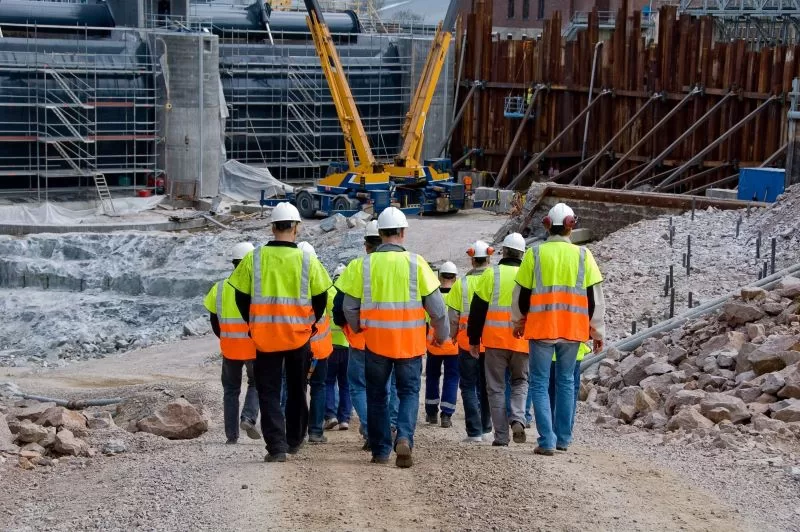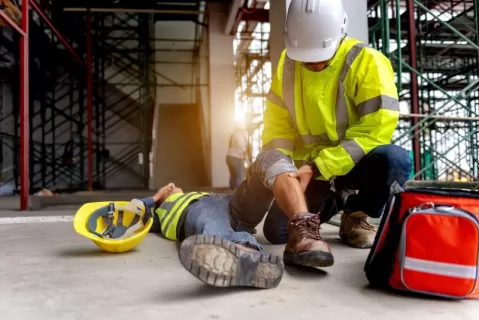Construction sites are among the most hazardous working environments, with a high risk of accidents and injuries. Ensuring safety is a priority for construction companies, workers, and site managers, as failure to adhere to safety regulations can result in serious consequences. These include injury, loss of life, and legal repercussions. To reduce risks, it’s essential to follow legal guidelines and practical safety tips that promote a secure work environment.
Read on to learn more about these tips for safety on construction sites.
Understanding Legal Obligations on Construction Sites
Before delving into practical safety tips, it’s crucial to understand the legal responsibilities that construction companies must adhere to. The Occupational Safety and Health Administration (OSHA) sets strict regulations outlining construction site safety standards. Failing to comply with OSHA regulations can lead to fines, lawsuits, and severe liabilities for the company involved.
However, hiring a construction accident lawyer may become necessary if legal issues arise due to accidents. They can help protect the injured person’s rights by ensuring they receive the compensation they deserve.
Additionally, companies must be aware that construction sites, often located in public areas, can pose pedestrian risks. For instance, in cases where someone is injured near a site, such as on a public walkway, consulting a sidewalk accident lawyer may be needed to safeguard your legal rights.
Tips for Safety on Construction Sites
Construction sites are inherently hazardous, with risks ranging from falls to equipment malfunctions. The following tips provide essential guidelines for enhancing both legal compliance and on-site safety measures:
1. Ensure Proper Training for All Workers
One of the most fundamental steps in promoting safety is ensuring that all workers are properly trained. Construction work involves heavy machinery, tools, and equipment that require specific knowledge to operate safely. Untrained or inadequately trained workers are more likely to make mistakes that could result in serious accidents.
Therefore, companies should implement comprehensive safety training programs that cover equipment use, hazard recognition, fall prevention, and emergency procedures. Continuous education, such as refresher courses and on-site training, should also be standard practice to keep everyone safe on the construction sites.
2. Always Use Personal Protective Equipment (PPE)
Personal Protective Equipment (PPE) is essential for the safety of construction workers. PPE includes items such as helmets, gloves, goggles, safety vests, and steel-toe boots. OSHA requires that workers wear PPE when exposed to hazardous conditions to prevent injuries and save lives.
Ensuring that workers properly use and maintain their PPE is also important. For example, hard hats must be inspected regularly for damage, and safety glasses should be free from cracks or scratches that could impair vision.
3. Secure the Construction Site to Prevent Public Hazards
Construction sites must be secured to prevent unauthorized access by the public, especially in areas where pedestrians frequently pass. Fencing, signage, and barriers should be erected to create clear boundaries between the construction area and public spaces.
If a member of the public is injured because of inadequate site security, the construction company could face legal action. Hence, it’s essential to protect workers and anyone near the construction site. This includes providing warning signs for hazards like falling debris, open trenches, or unstable surfaces.
4. Regularly Inspect Equipment and Tools
Faulty equipment is a common cause of accidents on construction sites. Construction machinery, such as cranes, excavators, and forklifts, must be regularly inspected and maintained to ensure they’re functioning correctly. Equipment failures due to poor maintenance can lead to catastrophic accidents.
As such, workers should be trained to inspect their tools and equipment before each use. If any signs of wear and tear are present, the equipment should be reported and taken out of service until it is repaired.
5. Establish Emergency Procedures
Accidents can happen despite the best safety practices. Therefore, it’s vital to have emergency procedures in place. All workers should know what to do in an accident, including whom to contact, where the first aid stations are located, and how to evacuate the site safely if needed.
Furthermore, emergency drills should be conducted regularly to familiarize workers with evacuation routes, rescue techniques, and communication protocols. Having a designated safety officer responsible for managing emergency responses is also a key aspect of a well-prepared construction site.
6. Communicate Safety Standards Clearly
Clear communication is essential for maintaining safety on a construction site. Workers should be informed of safety policies and updates regularly. This communication can take many forms, including daily safety briefings, signs around the worksite, and written materials like safety manuals.
Moreover, construction managers should encourage workers to report unsafe conditions immediately. An open line of communication between workers, supervisors, and safety officers can help identify potential hazards before they lead to accidents.
7. Create a Culture of Safety
Fostering a safety culture is one of the most effective ways to reduce the risk of accidents on construction sites. When safety becomes a core value within the organization, it encourages workers to take personal responsibility for their actions and the safety of their coworkers.
Leaders should lead by example, adhering to safety standards and emphasizing their importance during team meetings. By creating a work environment where safety is a priority, companies can significantly reduce the likelihood of accidents.
8. Stay Updated on Legal Requirements
Construction laws and safety regulations can change over time, and companies need to stay current on any new legal requirements. This includes changes in OSHA standards, local building codes, and other safety guidelines. Regular consultations with legal professionals specializing in construction law can also help ensure compliance with all regulations.
Conclusion
Safety on construction sites is a shared responsibility between workers, managers, and companies. By following these legal and practical tips, companies can reduce the risk of accidents, comply with regulations, and protect their workers and the public. Remember, taking a proactive approach to safety is key to preventing injuries and mitigating legal risks.


